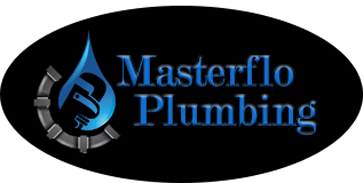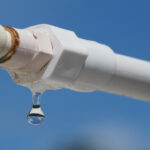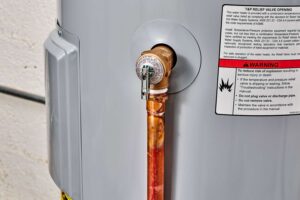When faced with pipe leaks, consider using epoxy putty to provide a temporary fix by cleaning the area, shutting off the water supply, and firmly pressing the putty onto the leak. A pipe repair clamp can also be a quick solution in emergencies, offering a versatile option for various pipe types. Rubber tape is another cost-effective temporary fix that forms a waterproof barrier easily adaptable to the pipe shape. Remember, effective solutions are key to preventing costly repairs and further damage.
Key Takeaways
- Epoxy Putty: Clean surface, apply firmly, and follow curing instructions for a reliable temporary fix.
- Pipe Repair Clamp: Versatile, cost-effective, and ideal for emergency repairs on various pipe types.
- Rubber Tape: Quick, waterproof sealing with easy application, adapting to pipe shapes for temporary fixes.
- Pipe Wraps: Cost-effective solution for minor leaks, withstands high pressure when properly applied.
- Professional Plumbing Services: Expertise, quality materials, and guarantees for efficient and reliable long-term solutions.
Epoxy Putty
To repair a pipe leak using epoxy putty, clean the area thoroughly before applying the putty. Begin by shutting off the water supply to the leaking pipe. Use a rag and some soapy water to clean the area around the leak, making certain there is no dirt, grease, or moisture present. Dry the area completely before proceeding.
Next, take a small amount of epoxy putty and knead it until it is a uniform color. Press the putty firmly onto the leak, making sure to cover the affected area completely. Smooth out the putty with your fingers to guarantee a tight seal. Allow the putty to cure as per the manufacturer's instructions.
Once the putty has set, turn the water supply back on and check for any signs of leakage. If the leak persists, you may need to apply another layer of epoxy putty. Remember to read and follow all safety precautions when working with epoxy putty to avoid any accidents.
Pipe Repair Clamp
Consider using a pipe repair clamp to quickly and effectively fix a leaking pipe. These clamps are a convenient solution for emergency repairs, providing a temporary fix until a permanent solution can be put in place. To use a pipe repair clamp, simply position it over the leaking area of the pipe and tighten the screws to create a secure seal. This method is ideal for situations where you need a fast and reliable fix without the need for specialized tools or professional assistance.
Pipe repair clamps are versatile and can be used on various types of pipes, including copper, PVC, steel, and even galvanized pipes. They are designed to withstand high pressure and provide a tight seal that prevents further leakage. Additionally, these clamps are reusable, making them a cost-effective option for temporary repairs.
When using a pipe repair clamp, make sure that you select the right size to fit the diameter of your pipe properly. It is important to follow the manufacturer's instructions carefully to ensure a successful repair. Overall, a pipe repair clamp is a practical solution for addressing pipe leaks quickly and efficiently.
Pipe Sleeves
Pipe sleeves provide protection and insulation for pipes in various applications. These sleeves are versatile and offer a practical solution for addressing pipe leaks and damage. Here are some key points to keep in mind when using pipe sleeves:
- Materials: Pipe sleeves come in various materials such as rubber, fiberglass, and stainless steel. Choose the material that best suits your specific needs based on the type of pipe and the environment it is exposed to.
- Installation: Proper installation is essential for the effectiveness of pipe sleeves. Guarantee a secure fit around the pipe to prevent any leaks or further damage.
- Size: Select the appropriate size of the pipe sleeve to match the diameter of the pipe you need to repair. A proper fit is essential for the best performance.
- Maintenance: Regularly inspect the pipe sleeves for any signs of wear or tear. Promptly replace any damaged sleeves to maintain the integrity of the pipe and prevent leaks.
Rubber Tape
When repairing pipe leaks, utilizing rubber tape can offer a quick and effective solution for sealing and securing damaged areas. Rubber tape, also known as self-fusing silicone tape, is a versatile material that can adapt to the shape of the pipe, creating a tight seal that prevents further leakage. To apply rubber tape, simply stretch and wrap it around the damaged area, overlapping the layers to guarantee a secure bond. The adhesive properties of the tape activate upon contact with itself, forming a strong, waterproof barrier that can withstand high pressure.
One of the key advantages of rubber tape is its ease of use – no special tools or expertise are needed for application. It is a cost-effective temporary fix for minor leaks and can provide a temporary solution until a more permanent repair can be arranged. Nevertheless, rubber tape is a temporary solution and may not be suitable for all types of pipe damage. For more severe leaks or long-term solutions, consider consulting a professional or exploring other repair options such as compression couplings.
Compression Couplings
For a more durable and secure solution to pipe leaks, compression couplings provide a reliable option for repairing damaged pipes. These couplings are designed to create a tight seal around the leaking area, preventing further water damage and ensuring a long-lasting fix. Here are four key advantages of using compression couplings for pipe leak repairs:
- Ease of Installation: Compression couplings are simple to install and require no special tools or expertise, making them a convenient option for DIY enthusiasts and professionals alike.
- Versatility: These couplings are available in various sizes and materials to suit different pipe types and sizes, offering versatility in repairing a wide range of leaks.
- Durability: Compression couplings are made of sturdy materials that can withstand high water pressure, ensuring that your pipe repair remains intact and leak-free for an extended period.
- Cost-Effective: Compared to other pipe repair solutions, compression couplings are relatively affordable, providing an effective yet budget-friendly option for fixing pipe leaks.
Heat-Activated Tape
Compression couplings offer a reliable solution for pipe leaks, and now we shift our focus to Heat-Activated Tape as another effective method for repairing damaged pipes. This tape is designed to create a strong, lasting seal when exposed to heat, making it a convenient option for quick fixes.
To use Heat-Activated Tape, start by cleaning and drying the damaged area of the pipe thoroughly. Cut a piece of the tape slightly longer than the damaged section to guarantee full coverage. Then, wrap the tape around the pipe, making sure it is applied smoothly and without wrinkles.
Next, use a heat source like a heat gun or a torch to activate the adhesive on the tape. Apply heat evenly along the entire length of the tape until it shrinks and forms a tight seal around the pipe. Allow the tape to cool and set before turning the water supply back on to check for leaks.
Heat-Activated Tape provides a simple and efficient way to repair pipe leaks without the need for specialized tools or skills, making it a valuable addition to any homeowner's toolkit.
Soldering
Consider using a high-quality soldering iron for effective and lasting pipe repairs using the technique of soldering. Soldering involves melting a metal alloy to create a bond between two metal surfaces, sealing any leaks in the process. Here are four essential tips for successful pipe repairs through soldering:
- Clean the Surface: Prior to soldering, make sure that the pipe surface is clean and free of any debris or corrosion. Use sandpaper or a wire brush to scrub the area thoroughly.
- Apply Flux: Applying flux helps the solder flow smoothly and creates a strong bond. Coat the cleaned pipe area with flux before heating it with the soldering iron.
- Heat Evenly: When soldering, ensure you heat the pipe evenly to prevent any weak spots in the bond. Move the soldering iron around the joint to distribute heat uniformly.
- Practice Safety: Always wear protective gear like gloves and goggles when soldering to avoid burns or injuries. Additionally, work in a well-ventilated area to prevent inhaling harmful fumes.
Pipe Wraps
To strengthen and safeguard pipes from leaks, pipe wraps offer a practical and efficient solution. These wraps, typically made of fiberglass, epoxy, or resin, provide a strong layer of protection around the pipe to prevent leaks and corrosion. They are easy to apply and can be used on various types of piping materials such as PVC, copper, and steel.
When using pipe wraps for leak repairs, it is crucial to thoroughly clean and dry the pipe before application. This guarantees that the wrap adheres properly and creates a tight seal. Simply wrap the affected area with the pipe wrap material, ensuring to overlap the layers for added strength.
Pipe wraps are a cost-effective solution for minor leaks and can withstand high pressures once properly applied. They provide a temporary fix for leaks while preventing further damage to the pipe. However, for more significant leaks or structural damage, it is advisable to consult a professional for a thorough inspection and repair.
Hydraulic Cement
When repairing pipe leaks, one effective solution to contemplate is using hydraulic cement for sealing cracks and gaps. This specialized cement, activated by water, can create a strong and durable seal to prevent further leakage. Here are some key points to ponder when using hydraulic cement:
- Preparation is Key: Before applying hydraulic cement, make sure that the area around the leak is clean and free of debris. This will help the cement adhere better and provide a more effective seal.
- Mixing Consistency: Follow the manufacturer's instructions for mixing the hydraulic cement. Achieving the right consistency is critical for proper application and ideal sealing results.
- Quick Application: Hydraulic cement sets rapidly once mixed with water. Be prepared to apply it promptly after mixing to take advantage of its quick-setting properties.
- Overlapping Application: To ensure a secure seal, contemplate applying multiple layers of hydraulic cement, slightly overlapping each layer to cover the entire leak area thoroughly.
Professional Plumbing Services
For effective and dependable pipe leak repairs, professional plumbing services offer expertise and peace of mind. When you hire a professional plumber, you benefit from their specialized knowledge and skills in handling various types of pipe leaks. These experts can quickly assess the situation, identify the root cause of the leak, and recommend the most efficient repair solution. Professional plumbers use advanced tools and techniques to fix the leak effectively, minimizing the risk of further damage to your property.
Furthermore, professional plumbing services provide a level of guarantee that the job will be done right the first time. You can trust that they will use high-quality materials and follow industry best practices to ensure a long-lasting repair. Additionally, many plumbing companies offer assurances on their work, giving you added protection and peace of mind.
Conclusion
Masterflo Plumbing is North Georgia's most trusted plumbing company. With over 20 years of experience and staffed with master plumbers, our team is equipped and ready to serve your plumbing needs. From water heater repair or replacement to minor and major plumbing problems, you can count on Masterflo Plumbing for your plumbing needs throughout Cherokee County and Metro Atlanta. Contact us today for reliable and professional plumbing services.


